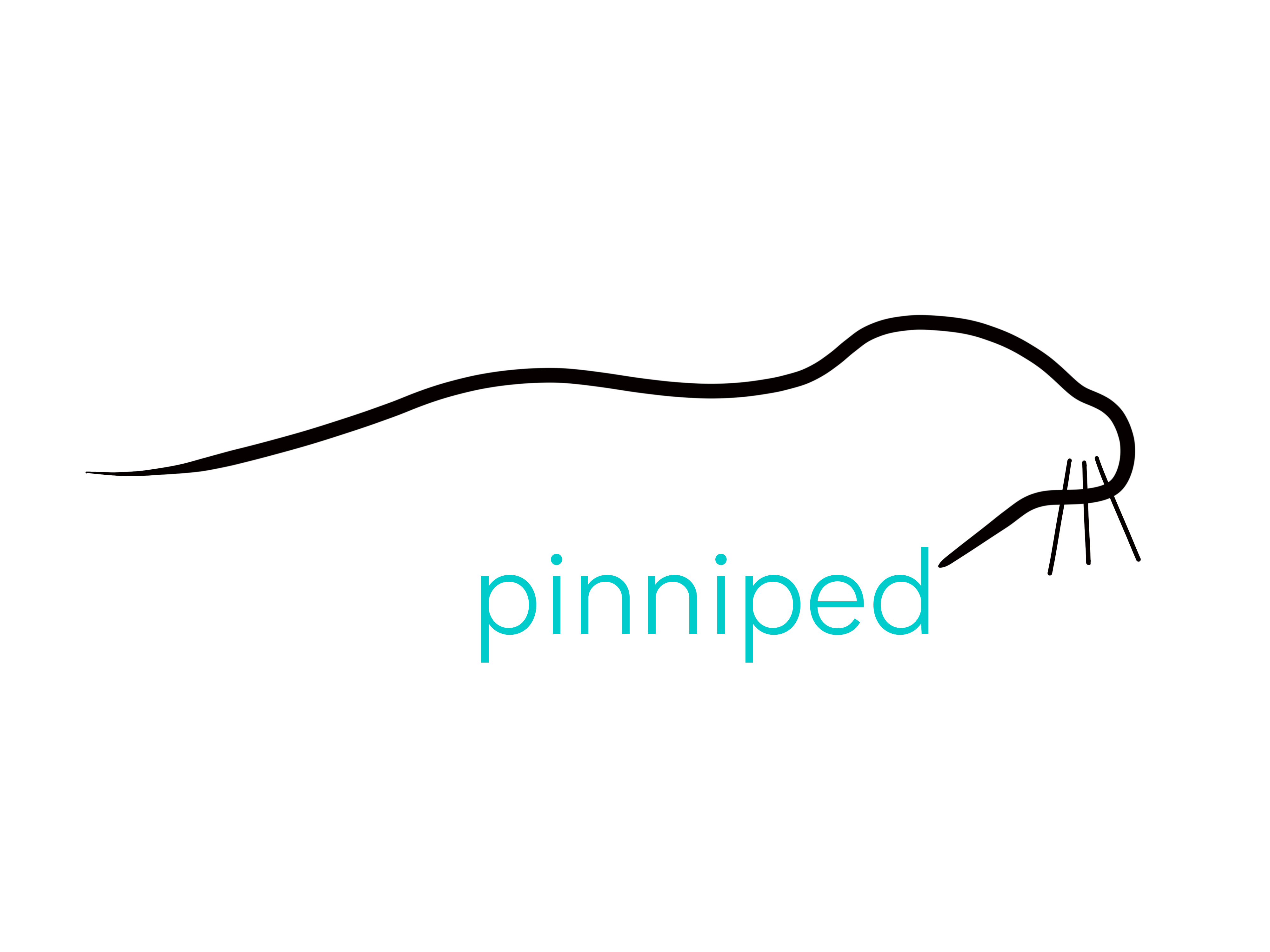Today’s seal is one that probably epitomises many people’s view of seals. The face you’ve seen many times, the little white fluffy seal pup with the huge dark eyes. But you may not know what this one is called… this one is the Harp Seal (Pagophilus groenlandicus). Of course it is only the pups that look like this, the adults are quite different, and actually, their coats are the reason for the name. With overall white or grey bodies, they also have a black hood and a black ‘harp-shaped’ saddle on their backs. The scientific name means “ice lover from Greenland” and indeed they do live on ice, found from Russia to Iceland and Northern Norway, to Greenland, and all the way across to the eastern side of Canada.
Tragically, the reason you may have heard of these adorable seals is the Canadian seal hunt. Each year, just after pupping, up to 100,000 of these seals are clubbed to death and then skinned for their pelt, and this has been going on for generations. As the Harp Seal still exists in large numbers, and is classified as Least Concern, no one has yet been able to put a stop to this cruel practice. However with public awareness and opposition growing, there is hope that eventually the hunt will be made obsolete, but at the moment a small few people are still profiting from the fur trade and it seems set to continue. In an ironically timely way, it has been announced that tomorrow, 9th April, represents the first day of this year’s seal slaughter, so we wanted to make this #SealSunday’s post all about the Harp Seal, in honour of all those who will lose their lives over the coming weeks. You can find out more information about the whole thing on the HarpSeals.org website, including ways you can try to help.
The female seals haul out on the ice in February and March to give birth to their ‘whitecoats’. Feeding them on rich fatty milk, the pups quickly gain weight whilst hardly moving at all in order to conserve energy. By 12 days old they are weaned, and left to live off the fat they have gained for another 6 weeks before they head to the sea. During this time they are extremely vulnerable, and can become quite weak, losing up to half their body weight. This makes them easy targets for sealers, and they have little protection. For the pups that survive the hunt, the white coat is soon shed, and afterwards the juveniles appear a silverish colour, with dark spots. Slowly, the dark saddle and hood start to develop as the juvenile becomes an adult, and this colouration is more pronounced in the males, with the females often remaining quite spotty.
So another depressing story for our #SealSunday, but this is the reality, and it is important to share the real plight of seals on our planet today. There is much to celebrate in how beautiful these creatures are, and in the fact that there are a good healthy 9,000,000 odd individuals in the world. But hopefully you can devote some time to seeing if there’s one positive action you can take to fight against this senseless slaughter.
Read more on the Pinnipedia and on www.pinniped.org/front-page/pinnipedia/harp-seal. The picture was taken by the International Fund for Animal Welfare (IFAW) who have worked for more than 40 years on ending the cruelty of the commercial seal hunt, you can read all about this here. Have a great evening.

